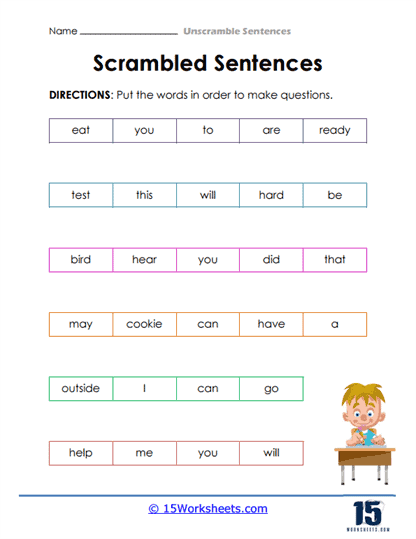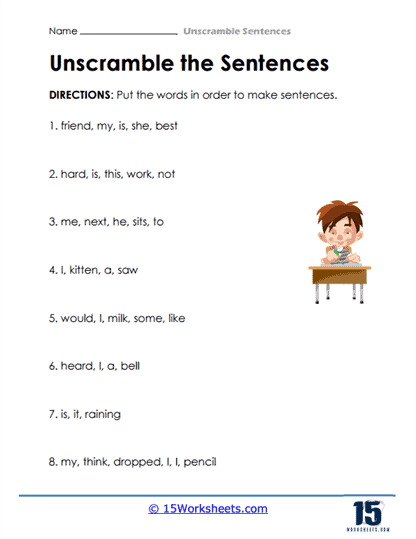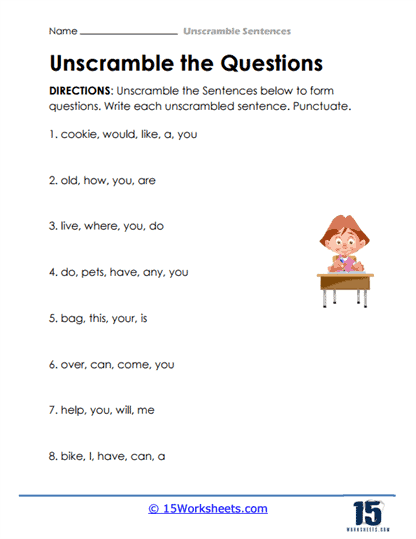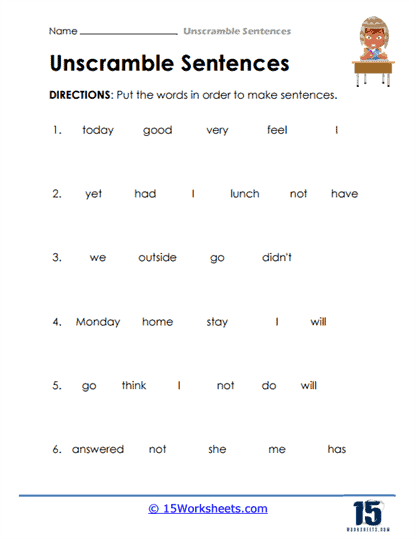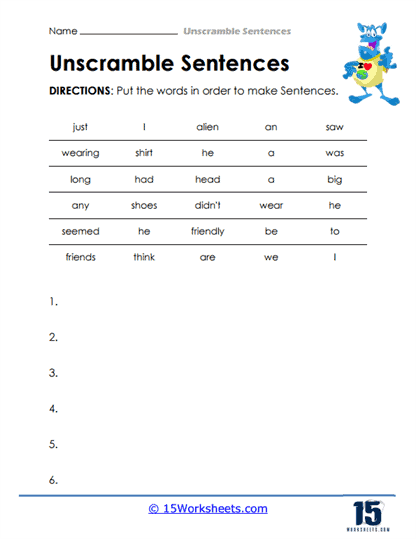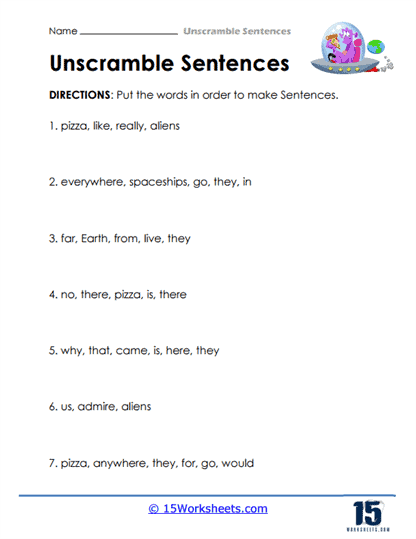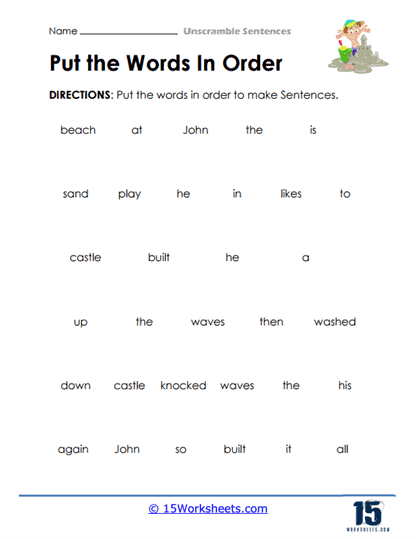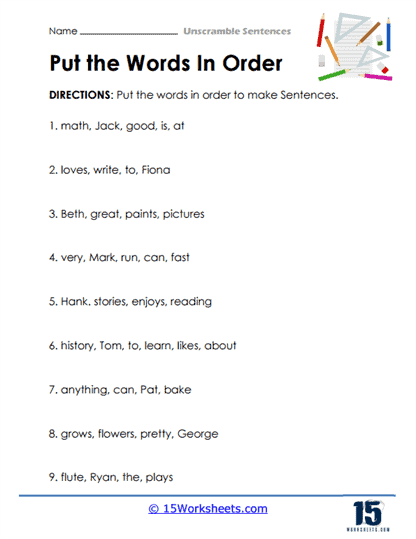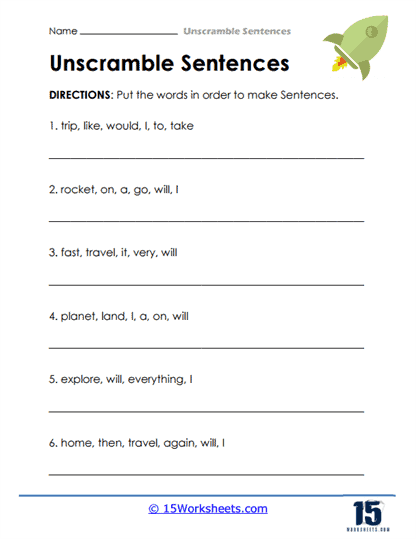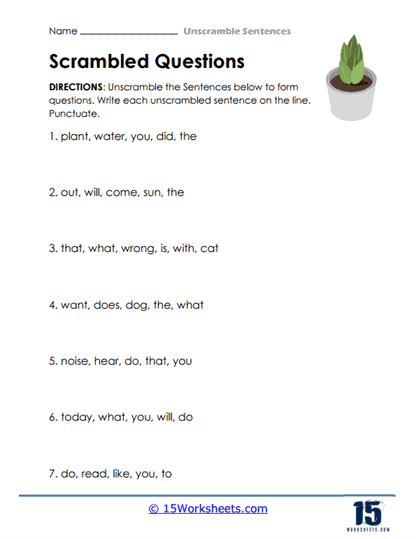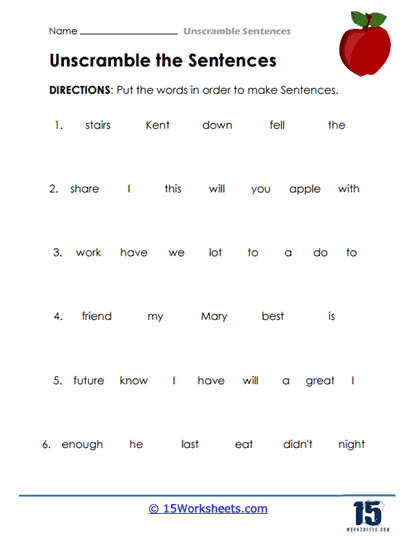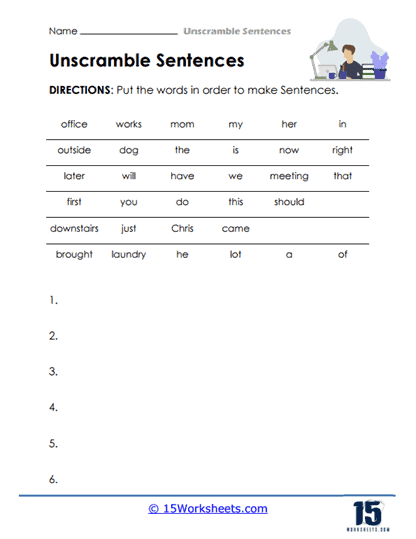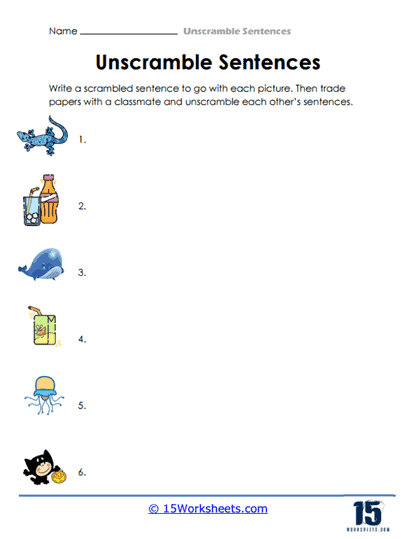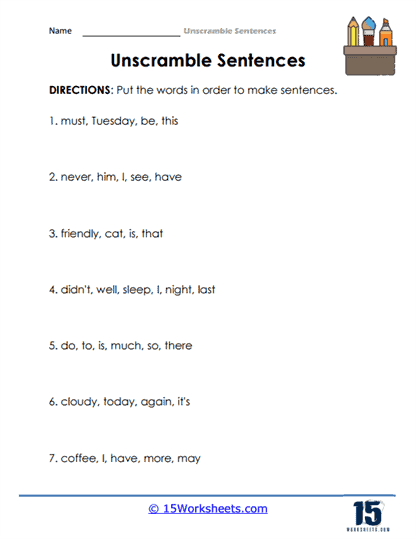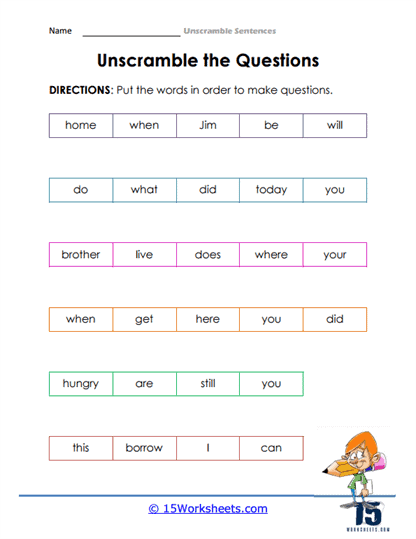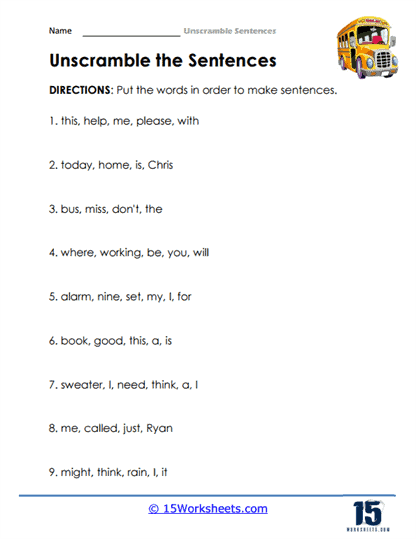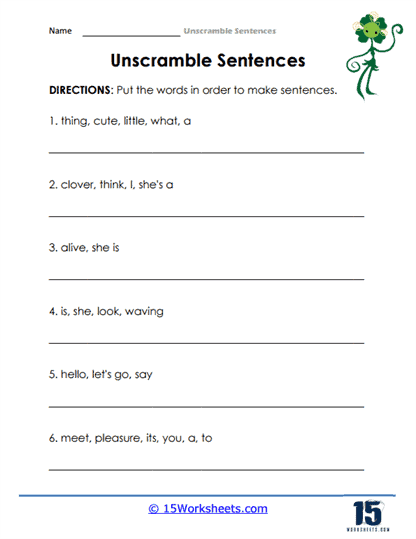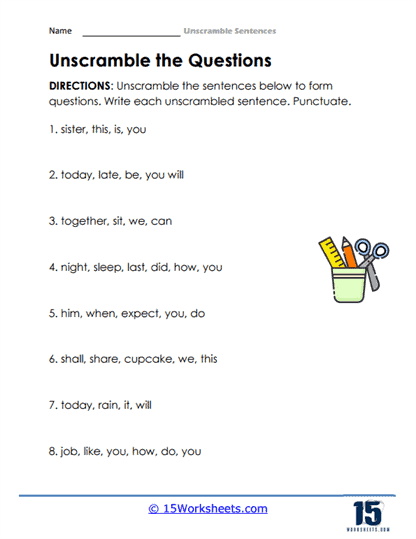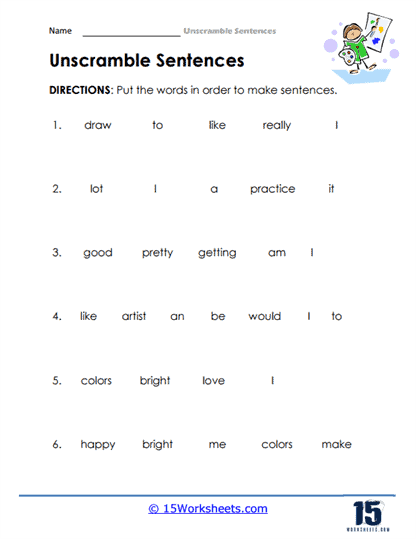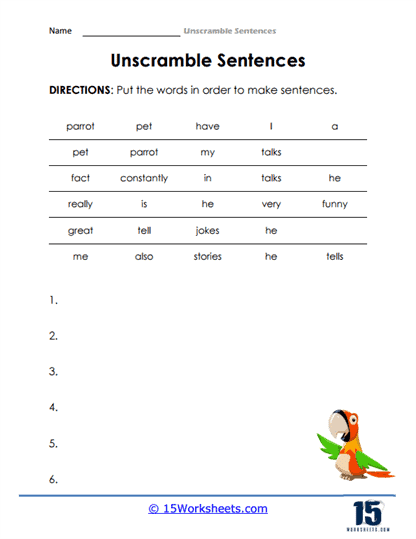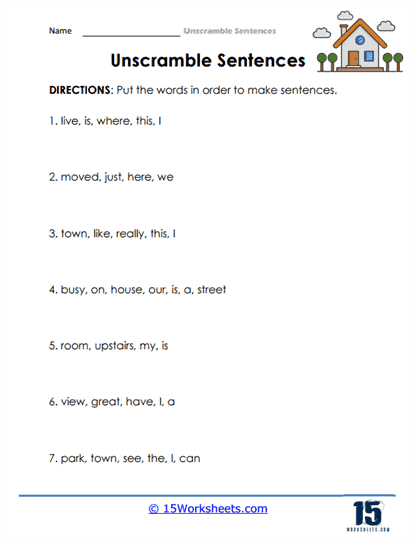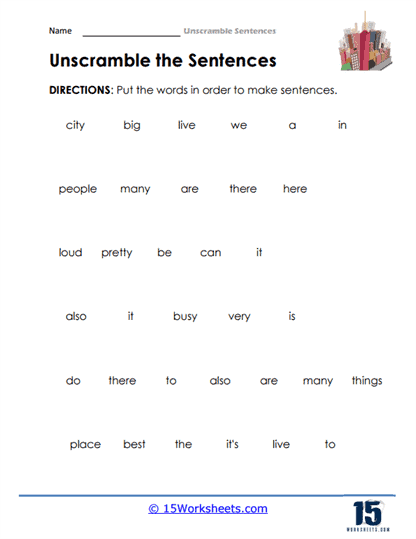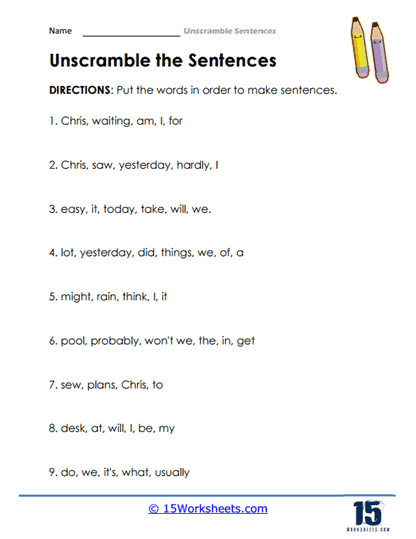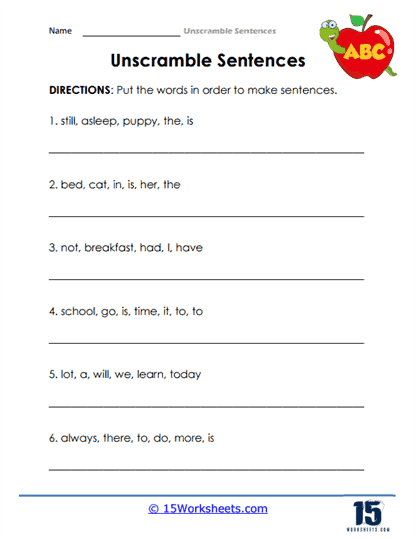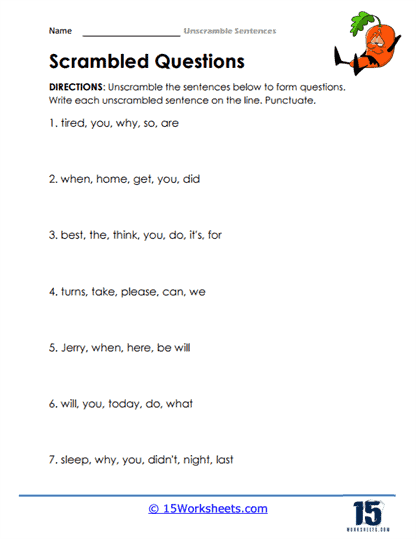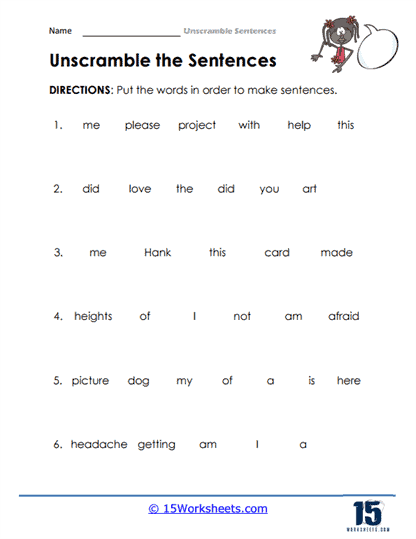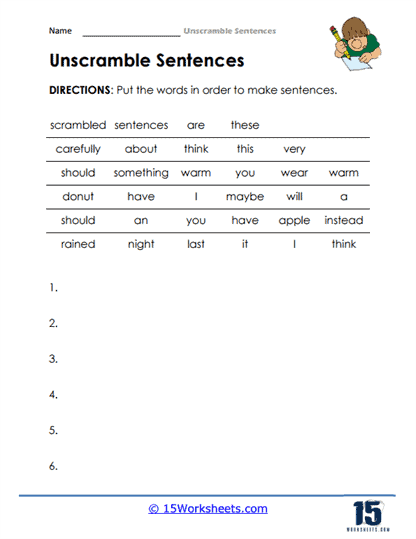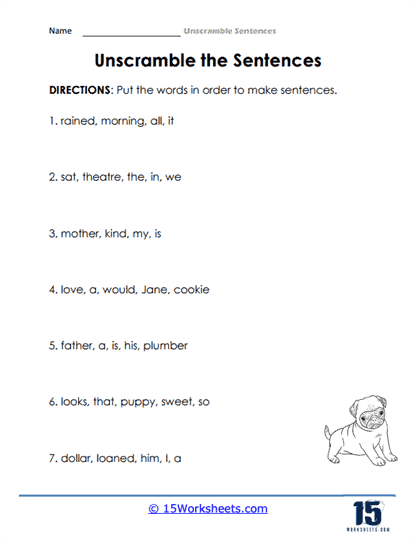Unscramble Sentences Worksheets
All About These 15 Worksheets
This series of 15 worksheets offers an engaging and interactive resource designed to help students enhance their language skills and develop proficiency in constructing well-formed sentences. These meticulously crafted worksheets provide an enjoyable platform for them to practice sentence structure, grammar, and vocabulary in a fun and challenging way.
This format empowers students to unravel jumbled words and rearrange them into coherent and grammatically correct sentences. Through a series of exercises, students will sharpen their language skills, improve their understanding of sentence construction, and develop their ability to express ideas clearly. By completing these worksheets, students will:
- Grasp the importance of word order and sentence organization;
- Expands students’ vocabulary repertoire, allowing them to explore new words and reinforce their understanding of word meanings and usage;
- Practice using correct verb tenses, subject-verb agreement, pronoun usage, articles, and other grammatical elements;
- Learn to identify key information, infer meaning from context, and apply appropriate grammar and vocabulary to create coherent sentences;
- And strengthen their grasp of grammar and improve their sentence construction skills.
In summary, this series offers an enjoyable and interactive approach to developing language skills and improving sentence construction. By engaging in the task of unscrambling sentences, students enhance their vocabulary, strengthen their grasp of grammar, and refine their ability to express ideas clearly and cohesively.
Whether used in language arts classrooms, ESL/EFL settings, or as part of independent study, these Unscramble Sentences worksheets provide a valuable resource for students to practice sentence structure, expand their vocabulary, and enhance their overall language proficiency.
What Are the Basic Rules of Sentence Structure for Writers?
Producing a well-punctuated, properly organized and coherent piece of writing is every writer’s dream and goal. Although it may seem simple to many people, writing a paragraph consisting of properly structured sentences requires skill and can take a lot of time and learning.
Proper sentence structuring is the basic ground for writing in any language. Continue reading below to learn about the importance of sentence structuring. Moreover, the article will cover the basic rules of sentence structuring that every novice or experienced writer needs to know.
What is Sentence Structure?
An English language sentence is required to have multiple different components to be structured correctly. If any component is missing, the sentence’s balance is disturbed and it becomes grammatically incorrect.
For a sentence to be structured according to the rules of English grammar, it needs to contain the following different components:
Subject
The subject of a sentence is the object, person, or place that is performing the action. A simple subject can be a noun or a pronoun. For instance, the subject can be Sarah or the woman.
Predicate
The predicate is the action that is being performed in the sentence by the main subject. The subject and the predicate together make the main structure of a sentence. For instance, in the sentence Sarah cleans the home, Sarah is the subject and “cleans” the home becomes the predicate.
Direct Object
The direct object in a sentence is usually a noun or a pronoun that is receiving the action being performed. For instance, in the sentence Sarah cleans the home, home is the direct object.
Indirect Object
The indirect object can be a noun or a pronoun that indicates for whom the mentioned action is being performed. For instance, in the sentence Sarah cleans her best friend’s home, the best friend is the indirect object.
Subject Complement
A subject complement is most commonly a noun, a pronoun or an adjective, and is used to describe or complement the sentence’s main subject. A subject complement is a part of the sentence in the presence of a linking verb.
For instance, in the sentence, Sarah is a great friend, the noun ‘friend’ compliments and describes the main subject.


